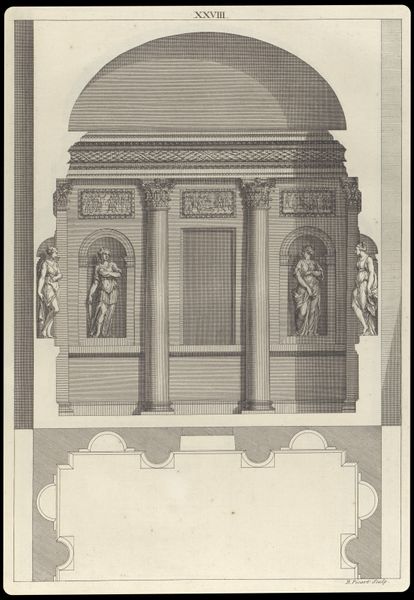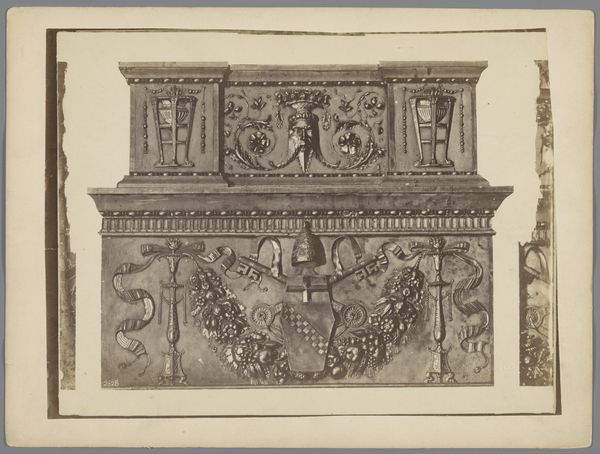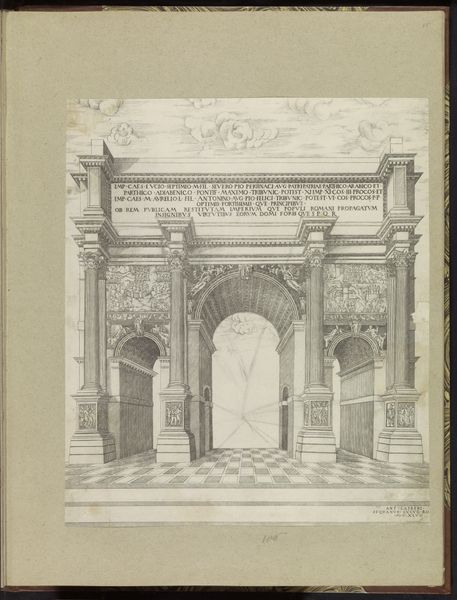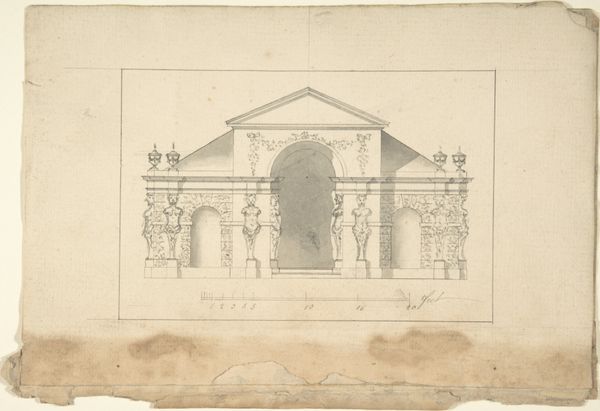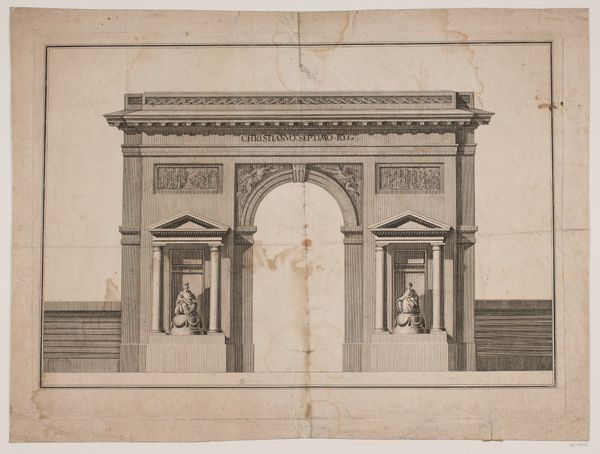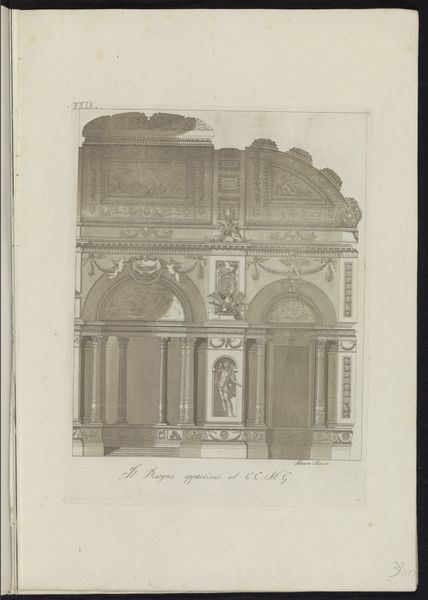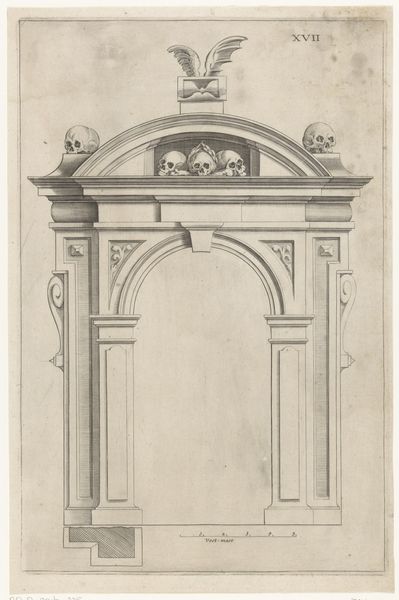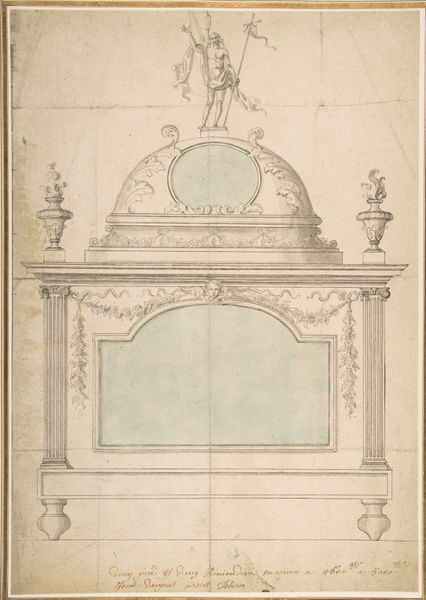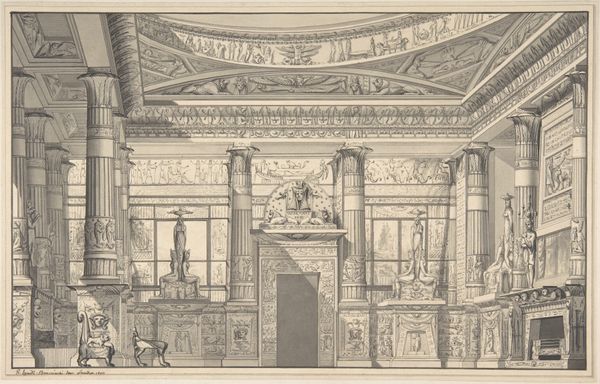
Section of the Sala Pianterreno by Algardi in the Villa Doria Pamphili, Rome 1744
0:00
0:00
Dimensions: Sheet: 9 5/16 × 11 13/16 in. (23.7 × 30 cm)
Copyright: Public Domain
Curator: Guiseppe Mannocchi’s 1744 drawing, "Section of the Sala Pianterreno by Algardi in the Villa Doria Pamphili, Rome," presents a detailed architectural rendering, currently residing at the Metropolitan Museum. What strikes you initially? Editor: There’s a kind of restrained elegance, isn’t there? Almost sterile in its precision. It feels detached, like a blueprint devoid of human presence, yet also imbued with a potent, if sublimated, authority. Curator: Precisely. Mannocchi, influenced by neoclassicism, emphasizes geometrical purity and rational design. Note the meticulous arrangement of pilasters, niches, and the coffered dome, all rendered with linear exactitude. The use of perspective, too, flattens the view, offering a systemic experience of Algardi’s architectural conception. Editor: But this so-called “purity” exists within a deeply unequal society. Who inhabits this space? The Roman elite. Drawings like these, while ostensibly about aesthetic values, also reinforced power dynamics. The villa, after all, isn't merely a building, but a statement about the wealth and status of the Doria Pamphili family. Curator: Your perspective broadens our understanding. However, let’s not overlook the inherent artistic skill. The rendering captures the intended grandeur. Observe the intricate friezes and relief sculptures decorating the structure. There's an aspirational quality to the precision, a reverence for classical form itself. Editor: Certainly. Mannocchi masterfully translates marble and stone into line and wash. But what ideological narratives do these forms perpetuate? We should explore what role the academic artistic practice has had within elite family agendas, especially considering that architectural illustrations like this one circulated predominantly among educated circles. Curator: That's insightful. The print indeed signifies the ambitions of its patrons. Editor: Seeing the Sala Pianterreno presented like this offers a view into art not just as a cultural artifact but as a marker of the society from which it originates. Curator: Absolutely. Viewing this drawing now offers layered experience as we think about technique alongside a family and location context, both informing our modern view.
Comments
No comments
Be the first to comment and join the conversation on the ultimate creative platform.
